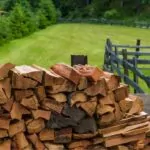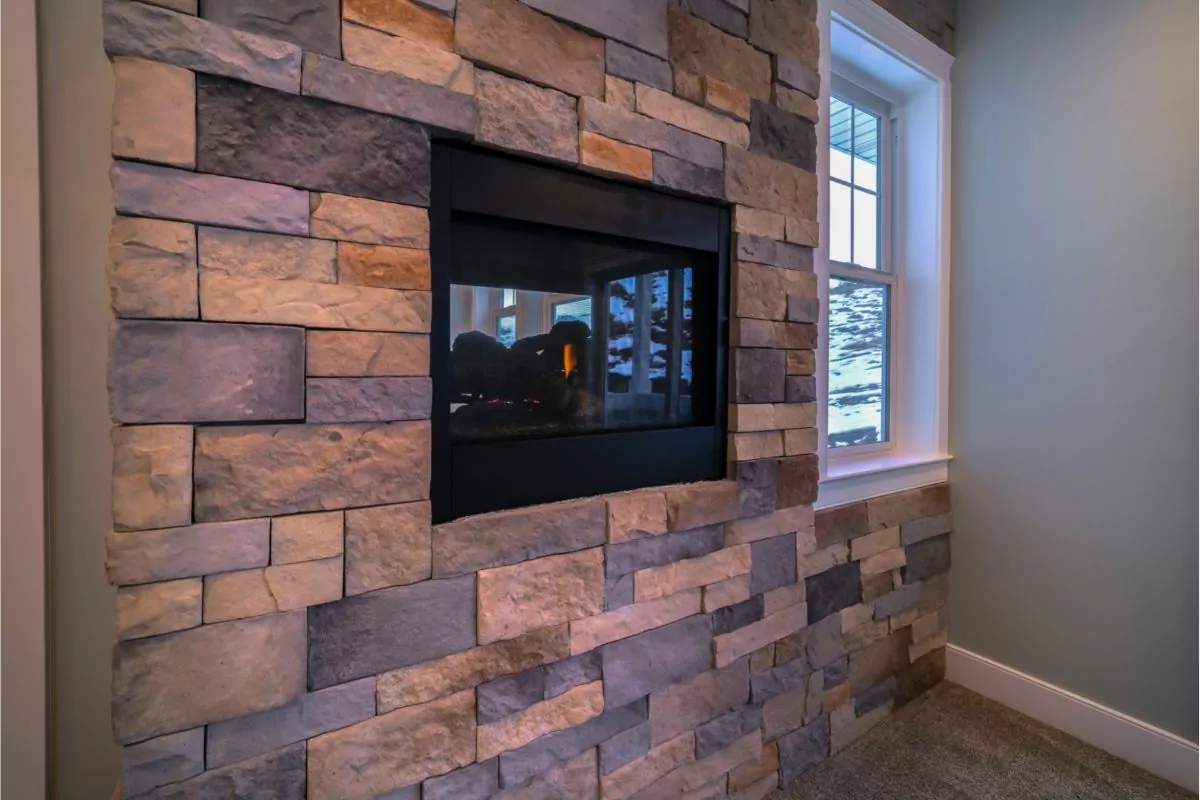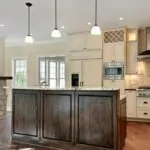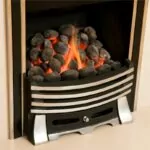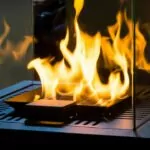As the colder months approach, many homeowners look forward to cozy evenings before a wood-burning fireplace.
There’s something about the dancing flames and crackling wood that creates a warm and inviting atmosphere.

However, with the various types of wood available, a common question arises – can you burn pine in a fireplace?
Pine wood is a popular choice due to its availability and affordability, but it also comes with some potential risks.
In this article, we will explore whether burning pine in a fireplace is a good idea and what precautions you should take if you choose to do so.
We’ve also included some additional information regarding whether or not pine wood works well as kindling and other advice that will allow you to make the right choice for your fireplace.
The Pros And Cons Of Burning Pine
Pros
- One of the most significant benefits of using pine is its availability. Pine trees grow abundantly, making pine wood easy to find and purchase. Additionally, pine is typically less expensive than other hardwoods, making it an attractive option for those on a budget.
- Another advantage of burning pine is its pleasant aroma. Pinewood releases a sweet and fragrant smell when burned, adding to the ambiance of a cozy fire. For some people, burning pine is a great choice for creating a specific atmosphere, especially during the darkest winter months.
Cons
- One significant risk is the buildup of creosote in the chimney.
- In addition to the risk of creosote buildup, burning pine produces a significant amount of smoke and soot, contributing to poor indoor air quality. The resinous nature of pine wood means that it burns at a higher temperature than other kinds of wood, which can cause it to burn quickly and unpredictably, potentially leading to dangerous situations.
- Pinewood has a lower density than hardwoods, meaning it burns more quickly and produces less heat. This characteristic can make it less efficient than other types of firewood. Pine also contains a higher level of resin, which can cause it to spark and pop more than other kinds of wood. It’s important to use caution when burning pine to prevent any potential accidents.
What Is Creosote?
Creosote is a byproduct of burning different fuel sources in a fireplace or stove. It is usually recognizable by its black or brown color and tar-like consistency.
It can build up in chimneys over time and increase the fire risk. Creosote forms when wood smoke and gasses cool and condense on the interior surface of a chimney.
As creosote accumulates, it can ignite from the heat of the fire, causing a dangerous fire. It’s worth noting that creosote is one of the most common causes of chimney fires and something that every fire owner should know about.
Pinewood causes so much creosote because it typically contains a high resin level. This resin will vaporize when burned and can contribute heavily to the formation of this substance.
More than this, the resin in pine wood will burn at a much lower temperature than in hardwoods, which can lead to incomplete combustion and, therefore, more creosote in your chimney.
Can You Burn Pine In A Fireplace?
While pine wood can be burned in a fireplace, it’s important to use caution and follow some basic guidelines to ensure safety.
The resinous nature of pine wood means that it burns hot and quickly, creating the potential for dangerous situations.
To burn pine safely in a fireplace, it’s essential to use well-seasoned wood.
This is wood that has been allowed to dry for upwards of 5 months, which drastically decreases the amount of moisture inside, making it less likely to produce excess smoke or creosote.
It’s also important to avoid burning pine exclusively and to mix it with other types of hardwoods to reduce the risk of creosote buildup in the chimney.
Another way to ensure the safe burning of pine is to properly maintain the fireplace and chimney. Regular cleaning and inspections by a professional can help prevent the buildup of creosote and other debris that can cause chimney fires.
Using Pine As Kindling
Pine wood can also be used as kindling to start a fire in the fireplace. Pine’s low density and high resin content make it an ideal choice for kindling.
It ignites easily and burns hot, which can help ignite larger logs and create a sustained fire.
To use pine as kindling, it’s essential to select dry wood. Wet or green wood will produce excess smoke and can be challenging to ignite.
Cut the pine into small pieces, and arrange them in a teepee-like structure in the fireplace. Light the kindling with a match or lighter, and once it starts to burn, add larger logs to the fire.
When handling pine kindling, it’s essential to use caution. Pine can spark and pop when burned, potentially causing injury or fire damage.
Always wear protective gloves and use fireplace tools when arranging the kindling or adding it to the fire.
While pine can be a useful and effective kindling, knowing the potential risks is important. Burning pine can produce excess smoke, which can be a health hazard, particularly for those with respiratory issues.
Additionally, the high resin content of pine can create the potential for dangerous situations if not handled correctly. Always take precautions when using pine as kindling to ensure a safe and enjoyable fire.
Burning Pine Needles
Many people find themselves tempted to use pine needles as fuel. However, this is not recommended.
Pine needles burn quickly and produce high amounts of smoke, creating a hazardous situation in a confined space such as a fireplace.
Additionally, pine needles can be difficult to control, and their small size can make them difficult to handle.
The risks of burning pine needles outweigh any potential benefits.
Excess smoke can be a health hazard, and the needles’ small size means they can easily escape the fireplace and start a fire elsewhere in the home.
Instead of burning pine needles, they can be used in other ways, such as composting or mulch for plants.
Pine needles are highly acidic, making them an excellent addition to compost or mulch around acid-loving plants such as blueberries or rhododendrons.
They can also be used as a natural insect repellent or as a base for a fragrant potpourri.
In conclusion, while pine needles may seem like a convenient source of fuel for a fireplace, it’s not recommended due to the risks involved. Instead, consider using them in other ways to provide benefits without the potential hazards.
Alternatives To Pine Wood
So let’s say you’re looking for a better alternative to Pine Wood. While pine is a readily available wood for many people, we have outlined some of its negatives.
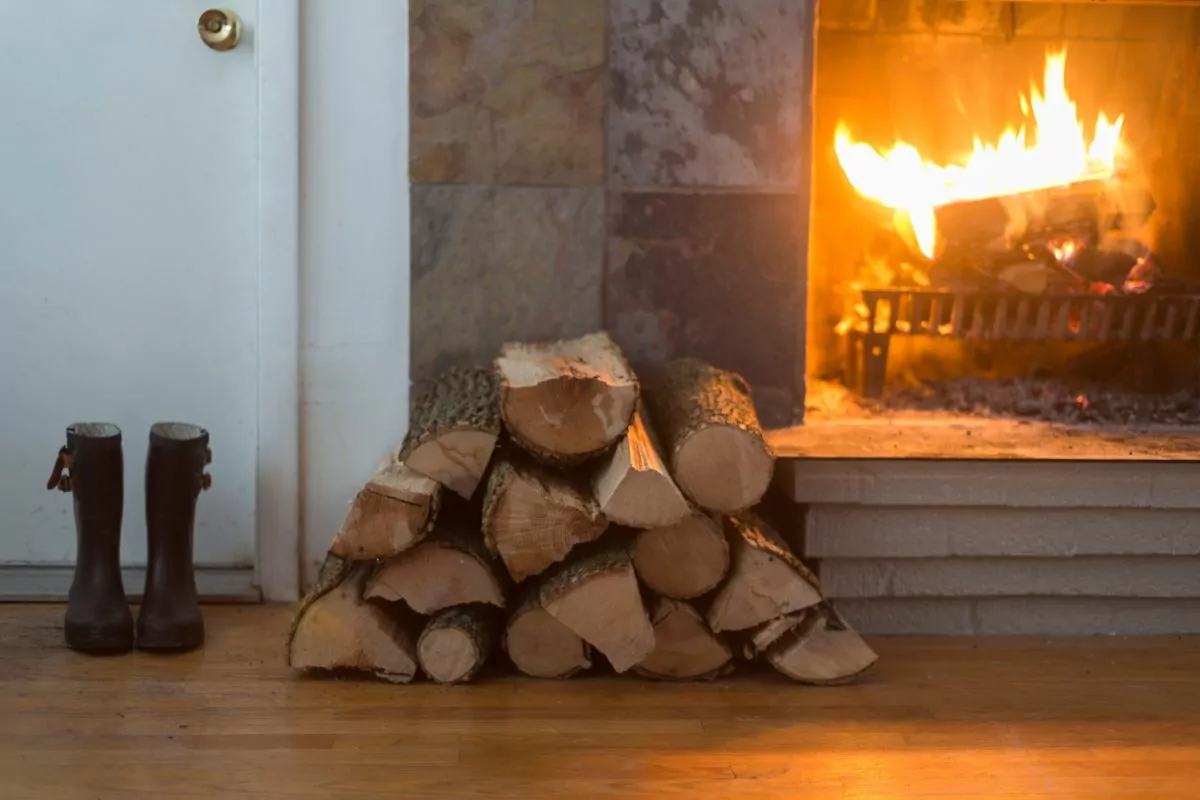
Fortunately, several alternatives to pine wood burn well, produce less creosote buildup, and are generally a safer and more efficient option for your home.
Hardwoods like oak, maple, and birch are excellent choices for fireplace fuel. They are denser and burn hotter than softwoods like pine, producing less smoke and soot.
This means hardwoods produce less creosote buildup, reducing the risk of chimney fires.
Additionally, hardwoods tend to have a lower moisture content than softer woods, making them easier to ignite and less likely to produce excess smoke.
Hardwoods’ high heat output means they can provide warmth for longer periods, reducing the need for frequent refueling.
Fruitwoods like apple and cherry are another option to consider. These kinds of wood burn cleanly and produce a sweet aroma that can enhance the ambiance of the fire.
They also have a lower moisture content than other hardwoods, making them easier to ignite and less likely to produce excess smoke.
While they may not produce as much heat as some of the denser hardwoods, fruitwoods are a great choice for those who want to enjoy the ambiance of a fire without producing excess smoke or soot.
Final Thoughts
In conclusion, burning pine wood in a fireplace is popular for many homeowners due to its availability, low cost, and a pleasant aroma.
However, there are potential risks associated with burning pine wood, such as creosote buildup and the risk of chimney fires.
While pine wood can be burned in a fireplace safely, it is important to follow proper burning practices, such as using dry wood, keeping the chimney clean, and monitoring the fire.
Alternatively, hardwoods like oak, maple, and hickory, or fruitwoods like apple or cherry, are safer and more efficient options that produce less creosote buildup and smoke.
For homeowners who want to use a wood-burning fireplace in their homes safely, there are several important factors to consider. First, it is essential to use the right type of wood.
Hardwoods like oak, maple, and hickory, or fruitwoods like apple or cherry, are recommended due to their high heat output, lower moisture content, and lower risk of producing excess smoke and soot.
Second, it is crucial to follow proper burning practices, such as keeping the fire small, using dry wood, and monitoring the fire at all times.
Third, regular cleaning and maintenance of the chimney and fireplace are necessary to reduce the risk of chimney fires caused by creosote buildup.
By following these tips, homeowners can safely and efficiently use their wood-burning fireplace to enjoy the warmth and ambiance of a crackling fire.
We hope this article has told you everything you needed to know about burning pine wood in a fire and that you’re now more confident about whether or not it’s the right choice.
We wish you the best of luck with your fireplace and hope it gives you comfort and warmth on the coldest winter nights.
- How To Open Chimney Flue - July 20, 2023
- Do Electric Fireplaces Use A Lot Of Electricity? - July 20, 2023
- How To Keep A Fire Going - July 20, 2023

